Goat losing hair on nose – Introduction.
If you’re a goat owner or someone who finds joy in spending time with these gentle creatures, you may have experienced the distress of noticing your Goat losing hair on its nose. Don’t worry; you’re not alone. Hair loss in goats can be perplexing, but understanding the potential causes can help you identify and address the problem more effectively. In this article, we’ll explore the various reasons behind hair loss in goats and share some personal experiences and anecdotes to shed light on this matter.
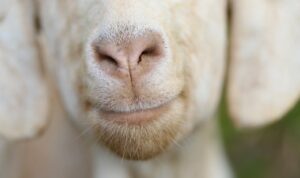

Hair Loss in Goats
Hair loss in goats can be alarming, but before jumping to conclusions, it’s essential to explore the potential causes. Hair loss can be categorized into several factors, including parasites, bacterial infections, viruses, fungi, nutritional deficiencies, and stress. Identifying the underlying cause is crucial to determining the appropriate treatment and preventing further issues.
Parasites
Regarding hair loss in goats, parasites often play a significant role. All goats have some parasitic activity, but external parasites can cause visible symptoms such as patches of missing hair, scabs, redness, and rough skin. Different parasites target specific areas of a goat’s body, aiding in their identification.
Sarcoptes Scabiei Var Caprae and Demodex Caprae
Two groups of burrowing mites, Sarcoptes scabiei var caprae and Demodex caprae, are known to infest goats and cause significant hair loss. Sarcoptes scabiei var caprae burrow under the skin, creating tunnels and lesions that leak fluid, leading to scabs, dry and scaly skin, and extensive hair loss. Demodex caprae, on the other hand, causes hair follicle blockages, resulting in scabs under the skin that eventually break through to the surface. This mite can lead to nodules on the Goat’s face, muzzle, neck, shoulders, flanks, udder, and undersides.
Psoroptes Cuniculi and Chorioptes Bovis
Psoroptes cuniculi, the psoriatic ear mite, live on the skin’s surface and often causes a goat to lose hair on its ears. It forms crusts in and around the ears, leading to a foul odor, itching, loss of balance, and spasmodic contractions of neck muscles. Another common surface-feeding mite is Chorioptes bovis, which causes mange in goats. Lesions typically start at the base of the tail, legs, and feet, eventually spreading to other body areas.
Goat Lice
Goat lice, wingless insects, are yet another external parasite responsible for hair loss. They create excessive itching, chronic dermatitis, and significant hair loss through scratching, rubbing, and biting. Biting lice (Bovicola crassipes and Bovicola limbata) and sucking lice (Linognathus stenosis and Linognathus africanus) are the two groups that infect goats. Biting lice cause itching, while sucking lice causes bleeding, scabbing, and scaling.
Prevention and treatment of Parasitic infestations
Parasitic infestations in goats are more likely when they face improper nutrition, lowered immune systems, and overcrowding. To prevent these issues, ensuring a high-energy diet and proper spacing can be effective preventatives. Additionally, regular inspection, cleanliness, and appropriate treatments, such as sulfur-based ointments, can help manage and heal bare spots caused by parasites.
Bacteria, Viruses, and Fungi
Apart from parasites, various bacteria, viruses, and fungi can contribute to hair loss in goats. These microorganisms can invade the Goat’s skin, causing dermatitis, lesions, scaling, and hair loss.
Bacterial Infections and Goat Skin Conditions


Bacterial infections often follow parasitic activity. Any break in a goat’s sebaceous skin covering can invite bacteria, leading to skin conditions. Staphylococcus aureus is a bacterium that can cause lesions when goats lie down on wet ground, resulting in hair loss. Proper treatment using povidone-iodine can help heal such lesions over time.
- Dermatophilus Congolensis – Dermatophilus congolensis, a bacterium with characteristics similar to a fungus, can form extensive colonies, leading to crustiness, exudates, and hair breakage. This bacterium is associated with prolonged wetting and often manifests as scabs on the edges of ears, face, muzzle, and tail. Adequate shelter from wet weather can help control its recurrence.
- Staphylococcus Aureus– Staphylococcus aureus, another bacterium, can invade a goat’s skin, resulting in staphylococcal dermatitis. This condition causes lesions, scaling, and hair loss, mimicking the symptoms of ringworm. Staphylococcus aureus infections are highly resistant to treatment and can be mistaken for other skin conditions.
- Viruses and their role in hair Loss – Viruses can sometimes combine with bacteria, leading to ulcers, scabs, and hair loss. Ulcerative dermatitis, or posthitis, can affect female and male goats, primarily targeting the penis, sheath, vulva, legs, and lips.
- Fungal Infections: Ringworm and Its Effects – Fungal infections, such as ringworm, invade dead skin and hair fibers. They are often contracted from infected areas, especially after prolonged periods of wet weather or when goats are housed in damp quarters. Ringworm appears as itchy, crusty, circular raised lesions, causing hair breakage and breakdown of the hair shaft.
Goat Nutritional Deficiencies and Stress
Nutritional deficits and stress can contribute to hair loss in goats. Mineral deficiencies, such as lack of copper, zinc, selenium, iodine, and vitamin A, can result in rough, flaky skin, scruffiness, balding tail tips, and hair loss. It is essential to analyze the specific mineral content in local plants and water supply to ensure an adequate forage diet with appropriate supplementation


Stress, whether physical or psychological and hormonal imbalances can also cause hair loss in goats. Common stressors include separation from the herd, illness, kidding, nursing, or dietary issues.
Shedding: A Natural Process – Shedding is a natural process in goats involving hair loss from either the outer coat, the undercoat, or both. The shedding pattern can vary depending on weather temperatures, sunlight exposure, time of year, sexual cycle, hormonal disruptions, drought, illness, and lactation. The absence of skin dryness, flakiness, scabs, or itching can recognize shedding.
Seeking Veterinary Assistance
With the numerous causes of hair loss in goats, it is crucial to consult a local veterinarian for further information, discussion, and treatment. Veterinarians can provide personalized advice based on the specific condition of the Goat, ensuring appropriate diagnosis and treatment options.
4+ best reasons why is goat sitting like a dog?
In conclusion, hair loss in goats can be attributed to various factors, including parasites (such as mites and lice), bacteria, viruses, fungi, nutritional deficiencies, and stress. Identifying the underlying cause is essential for effective management and treatment. Maintaining proper nutrition, hygiene, and regular veterinary care is vital for promoting goats’ overall health and well-being. By staying vigilant and taking appropriate measures, goat owners can help their furry friends maintain healthy skin and a lustrous coat.
READ MORE:

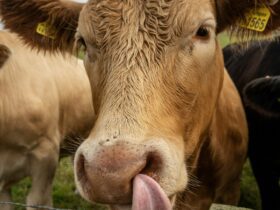


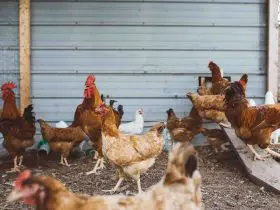



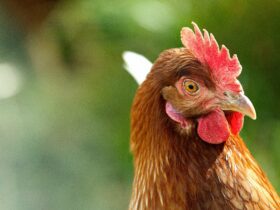



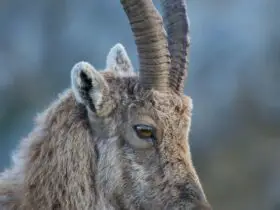

Hello!! Welcome to Anim Farm